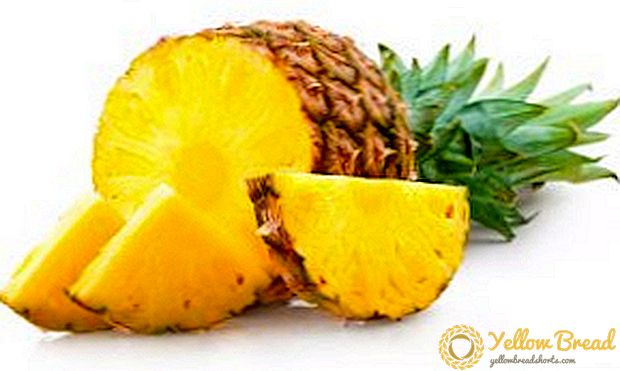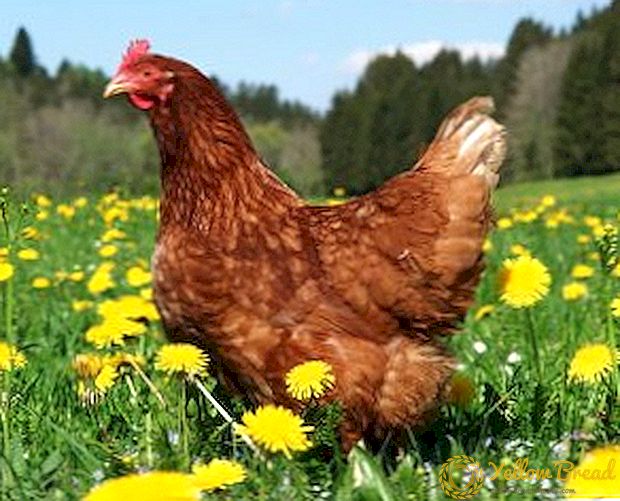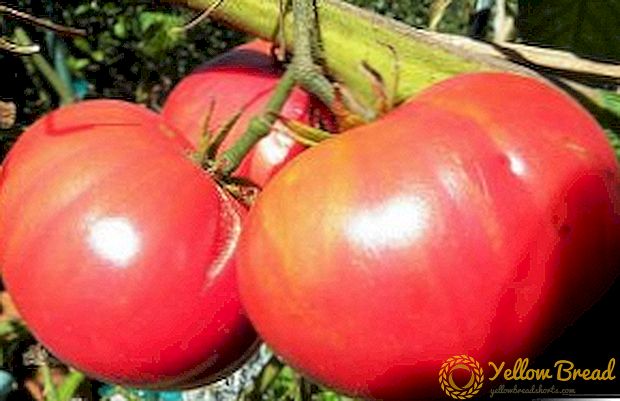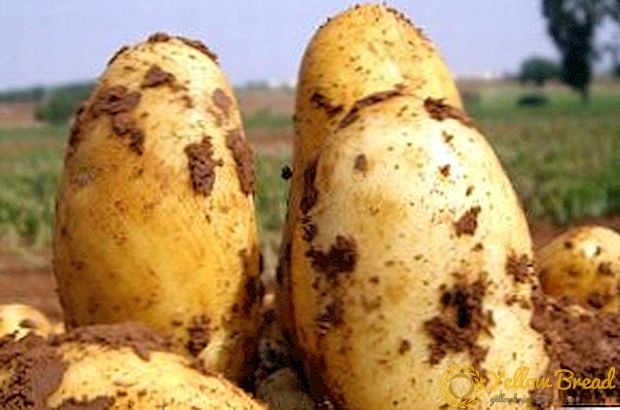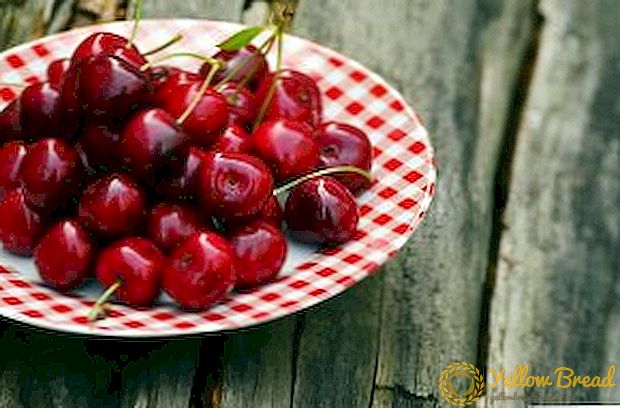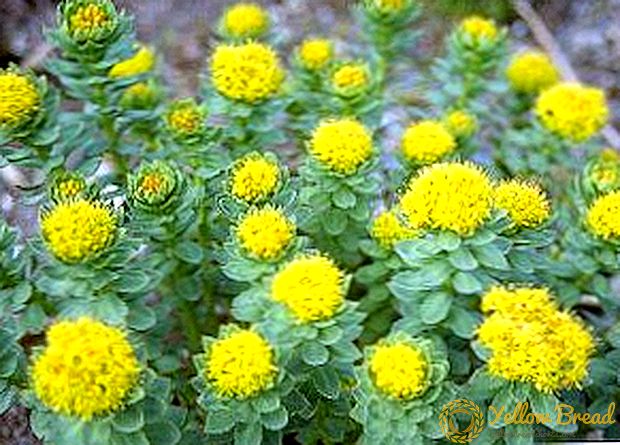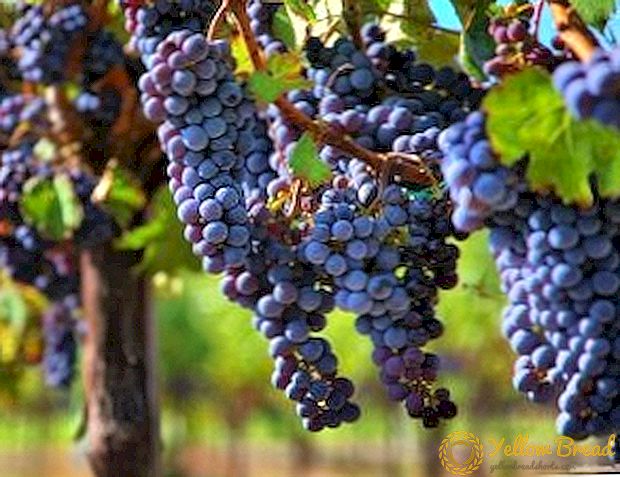
Fans of delicious grape berries are many, and therefore try to plant this crop near their own homes or on summer cottages.
However, not always and not everyone succeeds in achieving good results in viticulture. Indeed, together with the existence of a huge number of grape varieties, there are also a large number of its diseases, as well as pests that can harm the vine.
But still, if we take into account the possibility of the disease being damaged by the grapes or notice their appearance in time, it can be effectively dealt with.
It is in particular diseases of the vineyards, we will dedicate you below.
- Oidium: how to learn and deal with this disease
- False flour dew or mildew - the most dangerous disease of vineyards
- How to help grapes resist "black spot"?
- Gray decay: how to deal with the parasite of the vineyard?
- Anthracnose: features of the defeat of the grape bush and the fight against the disease
Oidium: how to learn and deal with this disease

What you need to know about oidium?
This disease is often referred to as “powdery mildew,” since one of its manifestations is whitish dust on the leaves of the grapes. Belongs to fungal diseases, it has fallen on our open spaces from the North American continent.It is very dangerous because affects both the vine and the crop. The degree and characteristics of the lesion will depend on the grape variety.
External signs of the defeat of the grape bush oidium
With the defeat of the grape bush by this disease, many shoots will be stunted, and the leaves on such shoots will be curly. The leaves are especially noticeable dust gray-white shade. With the start of the harvesting, this dust will be visible on the entire surface of the affected leaves, inflorescences and clusters. Affected by oidium inflorescences and berries that have already started, die off and dry.
It is important to note that the incubation period during which the oidium can hit the grapes lasts 1-2 weeks. A warm and humid weather has a positive effect on its reproduction and distribution. Even at temperatures above 5 ° C, this fungus begins to germinate.
What to do so that the bush does not hit the flour dew
Even simple agrotechnical methods help to fight with oidium. In particular, flour dew is afraid of a large amount of fresh air, less reproduces when thinning bush.
Therefore, the shoots of the vine are recommended to constantly tie up and thin out, remove the stepchildren and prevent the weeds from overgrowing the soil around the trunk bush.
Also, the grapes are recommended preventive spraying, which should be carried out three times per season: when the shoots grow on the vine to a length of 15-20 centimeters, before the start of flowering and at the time when peas appear on the clusters.
Methods of treating grapevine from oidium

For the treatment and prevention of this disease is recommended to use special drugs. Among them, the most effective and common are "Strobe", "Thanos", "Topaz", "Horus". Leaves affected by disease, shoots and clusters are recommended to be removed and burned. This will help stop the further spread of the disease.
False flour dew or mildew - the most dangerous disease of vineyards

What is the peculiarity of this disease?
Unfortunately, but mildew is not only very dangerous, but also the most common disease that affects vineyards. Just like true flour dew, mildew is able to hit absolutely the whole bush. Of course, that the degree of damage to this disease is not always the same.
The grape variety and weather conditions will play a big role: the disease is best spread during heavy rainfall and high air humidity.
How to recognize mildew on your grapes?
Mildew appears as round, as if oily, spots that appear on the growing leaves of the grapes. At high humidity, white powder appears on the underside of the sheet under such a spot — powdery powdery deposits. Over time, the spots of the leaf affected by such stains begin to die off: the leaf turns yellow, and then the place of the "burn" acquires a reddish-brown hue.
Such leaves fall. But the damage to the leaves is not limited, but may be transferred to inflorescences, on the crest of which long spots of green color appear. The affected tissue of the crest also dies off over time, disrupting the supply of necessary substances directly to the berries.
Mildew can also affect the entire bunch, covering it with white powder and causing the berries to dry. This disease is especially dangerous for the reason that without a special spraying and under favorable conditions, for one season mildew able to generate again up to 16 times.
Recommendations for the prevention of diseases of the grape bush mildew
In order for mildew not to affect your grapes, it is very important to look after them well and select varieties with complex resistance.
In order for the vine to be strong and strong, you need it regularly. fertilizeable to nourish the soil with potassium and phosphorus. It is also important to constantly mulch the soil near the trunk and remove all stepchildren from the vine.
But the best prevention mildew will be shrub treatment with various fungicides. Prophylactic treatments are carried out at the same time as spraying from true flour dew.
Treatment of the grape bush affected by mildew
To prevent the disease from spreading and to remove the source of its occurrence, it is recommended to remove and burn the affected areas of the grape bush. Also, for planting grapes, it is better to select such places where the bush can receive the maximum amount of solar heat and light, even in the worst weather conditions.
Effectively fight mildew You can use the following drugs:
- "Antrakol"
- Mixture "Bordeaux liquid"
- "Kuproskat"
- "Ridomil"
- "Strobe"
- "Chloroxide copper"
How to help grapes resist "black spot"?

Distinctive features of the disease
Another very dangerous for the grape bush fungal disease. When describing it, such names as Fomopsis or simply the death of shoots are often used. Often found on those vineyards that grow in areas high humidity. Manifests black spot mostly on all green parts of the bush and on the stiffened vine.
Features of the black spot in the vineyard
Discolouration begins on the indicated parts of the grape bush. Typically, this kind of spots affect only 6-7 internodes, although there are cases of damage to the entire bush up to the trunk. After fading and at temperatures above 10ºС, black spots appear on the affected areas - the bodies of the fungus or pycnidia.
If the disease is able to penetrate deep into the wood, the site of the lesion is rotten and can cause the death of the entire portion of the vine.
Black spots begin to occur from June, hitting annual shoots with peculiar round dots, painted in black-brown color.
As the shoot grows, these points spread and stretch, causing the vine to crack.Sometimes a black spot infection affects the leaves and crests of the clusters. Affected leaves begin to turn red and turn yellow long before autumn.
Preventive measures to help prevent black spot damage
It is very important to know that vineyards are affected by this disease often through damage to the bush. So, in case of untimely pruning or careless removal of shoots, wounded places become especially vulnerable.
In combination with adverse weather conditions, there are all conditions for the infection of grapes with black spot. Therefore, pruning does not need to be considered pure formalityIt is worth referring to this process with the necessary responsibility and to handle the cut points.
For the prevention of black spot are well suited to those drugs that are recommended for the treatment and prevention of mildew.
How to overcome the black spot in his vineyard?
Chemical methods to combat the manifestations of this disease do not yet give good results. It is very important to remove the fungus itself, for which it is treated with copper preparations in the autumn time after pruning the vineyard.
Everything damaged areas of the vineyard are cut completely.
Spraying against black spot are carried out in early spring, with the appearance of the first 2-3 leaves on the bush. For such a spraying fungicides are best suited. After that, it is worth about 3 times to spray the bush with special preparations, combining treatment with spraying from oidium and mildew.
The danger of black spot is that it the disease is considered chronic for vineyards. Therefore, if it has already appeared on the bush, then it will take more than one year to fight it. However, if you make enough effort and carry out regular treatments, you can significantly heal the bush.
Gray decay: how to deal with the parasite of the vineyard?

What is the peculiarity of this parasite?
If a gray mold fungus has managed to hit your vine, it will parasitize it all season, especially if external conditions contribute to this. Absolutely all greens of a bush and all annual wood are capable of striking this disease.
Categorically procurement of cuttings for vaccination from the affected bush is not allowedbecause with the cutting of gray rot extends to the stock. Thus, only a developing bush will be already affected by the disease, and in this case it will be much harder to fight the parasite.
How to distinguish manifestations of gray rot in grapes?
Back in the spring, with cold and damp, this parasite covers only blooming eyes and shoots, forming a peculiar plaque on them.
If in the future the air around the grape bush stagnates, and there is an excess of moisture in the air, gray patches can even cover clusters. At the same time, if you touch the affected bunch, it will dust.
Thus, the disease completely spoils the crop. if the weather is dry, only a few berries that frown over time can be amazed. If the gray rot struck the inflorescences - in dry weather they will simply die off and wither, becoming brownish in color.
This disease can cause rotting of berries and crests of a bunch of grapes.
Prevention of gray mold: what activities are important to carry out?
- In general, the prevention of gray rot is the same as that of oidium or mildew: the same preparations are used and with the regular implementation of the necessary sprays the disease is often not manifested.
- In order not to cause the appearance of gray rot on your own, it is necessary to take into account that, first of all, the place of cuts and those places that were weakened affects this disease. Thus, you need to be attentive to the bush and well follow such places.
- A grape bush becomes more susceptible to gray rot if it is only unilaterally fed with nitrogen fertilizers.
- It is also worth knowing that even if in springtime gray decay and struck your grapes, then upon the onset of dry summer weather, it will not spread further.
Treatment of the vine from the disease
In order for the disease not to spread throughout the bush, it is important remove affected parts of grapes. Also, in this case, spraying with special preparations will be mandatory. Even if the drugs do not destroy the disease, then it will not develop further this season.
Anthracnose: features of the defeat of the grape bush and the fight against the disease

Characteristics of the disease anthracnose: what is it dangerous for grapes?
Anthracnose, as well as almost all fungal diseases, often has a very extensive affected area.It manifests itself both on the leaves and the shoots of the vineyard, and on the inflorescences, and later on the berries.
The disease occurs throughout the world, especially favorable for it is the warm climate, like on the Black Sea coast and southern Ukraine.
The most negative feature of this disease is its the ability to hibernate and persist to 5 years. Thus, even without external manifestations, grapes can be affected by anthracnose. It is worth noting that during one growing season a fungus of this disease can spawn about 30 generations of its spores.
This disease is especially dangerous for only blooming parts of the bush, if at the same time the weather is generous with precipitation.

Features of the manifestation of anthracnose grapes
Leaves affected by this disease are characterized by the presence of brown spots on them with a characteristic dark white border. Because of this nature of the manifestation, this disease is often called the bird's eye.
Spots can often even merge. As with oidium, these spots become the cause of the death of leaf tissue. Shoots also affect the heel of a pink-gray or brown-brown shade.that look like depressed pits.
On the shoots stains also characterized by a dark border. The affected wood cracks over time, ulcers form on the vine. Shoots generally can be broken, and later - absolutely dry. In the same way they react to anthracnose of grapes and leaf stalks and crests of grapes.
The inflorescences after the lesion by the disease described become brown, dry out. Berries are also affected depressed reddish spots, with the obligatory border of a darker color. The disease is able to deprive the crop and badly hurts the bush.
What to use for the prevention of anthracnose grapes?
This disease is particularly prevalent in rainy weather. Therefore, after the weather becomes drier, the vine must be treated with drugs.
It is best to use fungicides, which need to be sprayed with a bush twice before it blooms, and once after, during the formation of grapes.
Treatment of a grape bush affected by anthracnose
To treat this disease is quite difficult, although success can be achieved. As preparations for treating the bush, the following are used:
- "Antrakol"
- "Acrobat"
- Mixture "Bordeaux liquid"
- "Kuprosat"
- "Ridomil"
- Thanos
- "Horus"
It is important to note that the treatment is carried out both in contact (the very first treatment in spring; copper preparations are used) and systemically (all subsequent ones).

